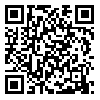BibTeX | RIS | EndNote | Medlars | ProCite | Reference Manager | RefWorks
Send citation to:
URL: http://psj.umsha.ac.ir/article-1-114-en.html
2- Deptartment of Biostatistics, Hamadan University of Medical Sciences, Hamadan, Iran ,
3- School of Public Health, Hamadan University of Medical Sciences, Hamadan, Iran.
4- Ph.D Student in Health Education and Health Promotion, Tehran University of Medical Sciences, Tehran, Iran
5- Ph.D Student Epidemiology, Tehran University of Medical Sciences, Tehran, Iran
Introduction: Burnout syndrome includes aspects of emotional exhaustion, depersonalization and decrement of personal accomplishment. Medical and health care staffs are vulnerable to burnout syndrome because of their exposure to physical and psychological stressors. The present study assessed the rate of features of burnout syndrome and its relations to demographic characteristics in staffs of health care centers of Hamadan city.
Methods: This cross-sectional study was conducted as a census on 278 staffs at health centers in Hamadan. Data was collected using the demographic questionnaire and Maslach Burnout Inventory. The obtained data were analyzed via SPSS software.
Results: Average score for emotional exhaustion, depersonalization and personal accomplishment were 21.44, 4.71 and 32.17, respectively. There was a significant relationship between emotional exhaustion, depersonalization and personal accomplishment (P<0/001). There were no significant relationship between burnout and demographic characteristics including age, sex, marital status, education level, work experience, housing status, employment status and income (P>0/05).
Conclusion: In view of high frequency of burnout (55.7) among health staffs and the impact of burnout on job, family, individual performance, absence from work and early retirement and job satisfaction increase through improving working conditions in the health care environment should be paid more attention.
Received: 2013/12/21 | Accepted: 2014/05/4 | Published: 2015/04/10
| Rights and permissions | |
 |
This work is licensed under a Creative Commons Attribution-NonCommercial 4.0 International License. |





